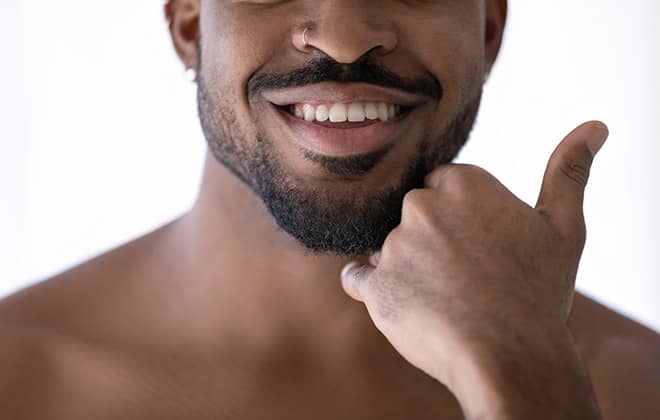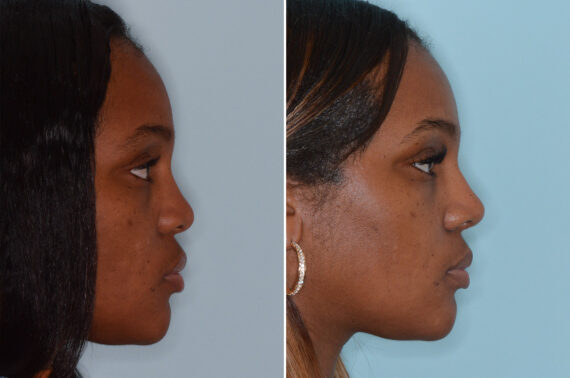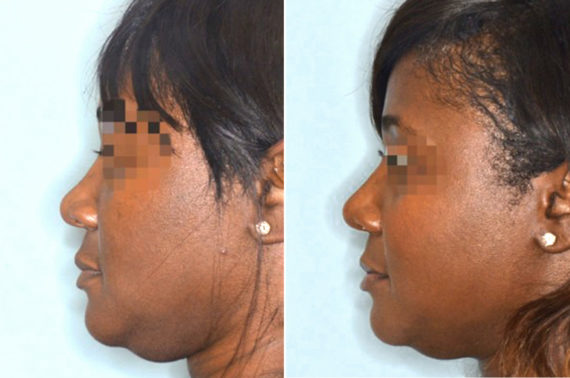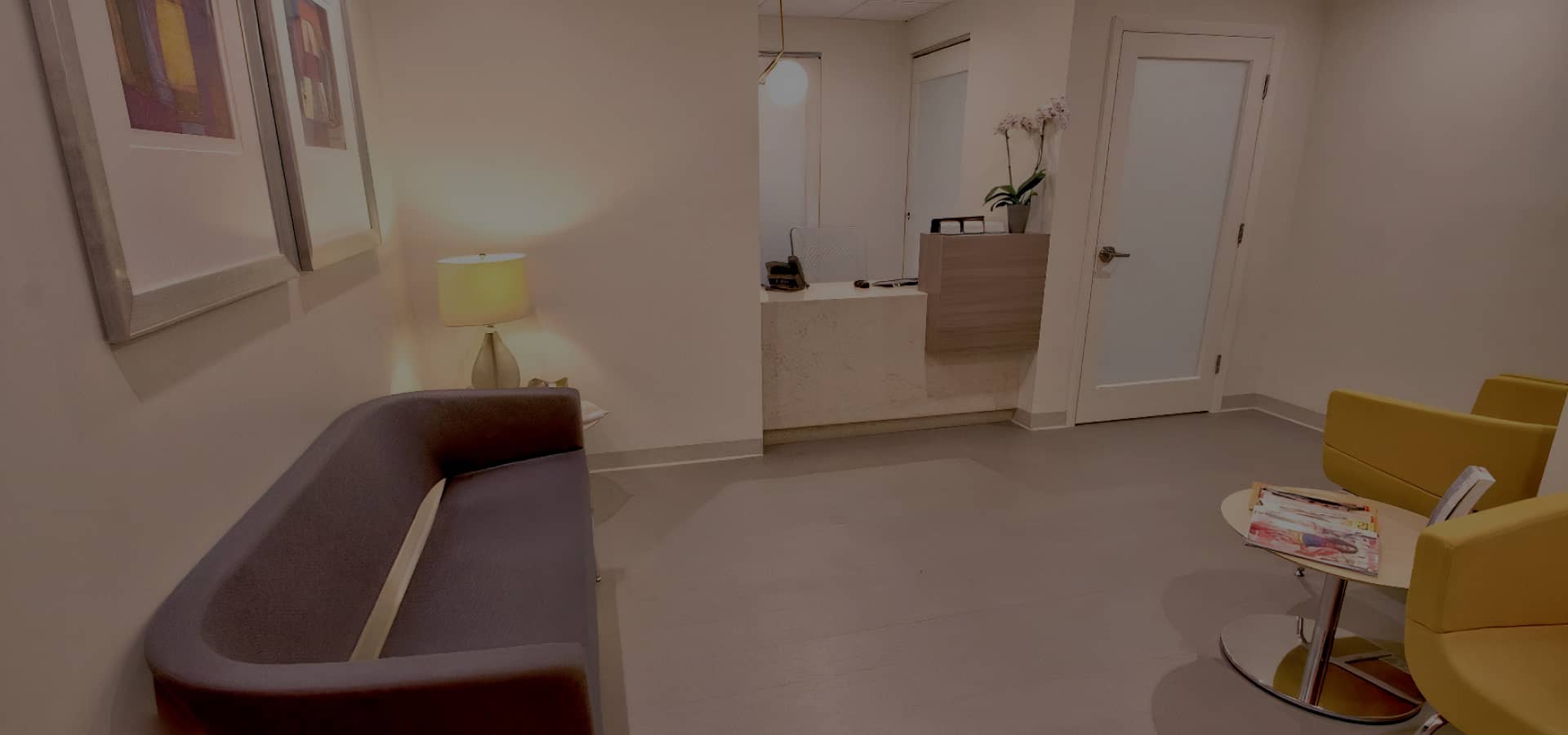Facial hair restoration is a popular procedure among men of all ethnic backgrounds who wish to enhance their appearance and boost their confidence. This procedure involves transplanting hair follicles from one body part, typically the back or sides of the scalp, to the facial region to produce a fuller, denser, more natural-looking beard. There are two main techniques used in facial hair transplantation: Follicular Unit Extraction (FUE) and Follicular Unit Transplantation (FUT) and both methods have their advantages and disadvantages.
When it comes to ethnic beard transplants, special considerations must be taken into account due to the unique characteristics of different hair types, scarring potential, and cultural trends. This article will explore the various aspects of ethnic facial hair restoration, focusing on the differences between African, Asian, and Caucasian hair, as well as the specific considerations for each ethnic group during the transplant process.
Facial Hair Transplantation Basics
In a facial hair transplant, hair is taken from the back or sides of the scalp and transplanted to the desired facial area. Individual follicles are harvested during the FUE treatment, which results in minimal scarring and a speedier recovery. On the other hand, the traditional FUT technique involves taking a strip of hair follicles from the donor area, leaving a long, linear scar. Tiny incisions are made by the surgeon in the beard area, and grafts are meticulously positioned at the right angle for natural-looking growth. Recovery is minimal with the FUE technique, and both are outpatient procedures.
About Ethnic Beard Transplants
Ethnic beard transplants require special considerations due to the unique characteristics of different hair types, scarring potential, and cultural trends. There are three major hair types: African, Asian, and Caucasian, each with different follicle shapes and characteristics. Surgeons must understand the unique aspects of each hair type for successful transplantation.
Surgeons performing ethnic beard transplants must take many different factors into account when planning the procedure, including the differences in hair types, the potential for scarring, and cultural trends. Communication between the surgeon and patient is key for success, as hair transplantation of any kind is a highly customized procedure.
Ignoring these differences leads to disappointing results. If you are interested in an ethnic facial hair transplant, it’s a good idea to get familiar with the procedure so you can choose the right surgeon and set yourself up for a successful surgery.
Beard Transplant for Asian Male.
Cultural Significance of Facial Hair Across Ethnicities
Facial hair has held various symbolic meanings across different cultures and epochs, often serving as a marker of social status, virility, and wisdom. In many Middle Eastern societies, a full beard is a sign of dignity and respect, while in Western cultures, it has oscillated between being a fashion statement and a symbol of rebellion against the status quo. For instance, the beard’s prominence in the hipster culture of the 21st century contrasts with its sparse presence in the corporate world, where a clean-shaven face is often the norm.
Historical Perspectives on Ethnic Facial Hair
Historically, facial hair has been a canvas for expressing identity and ethnic heritage. The intricate beard and mustache styles of the Ottoman Empire, which often indicated one’s rank and profession, starkly differ from the minimalist aesthetic preferred in East Asian cultures, where facial hair was traditionally less prevalent. In African tribes, facial hair has been used in rites of passage ceremonies, with specific styles signifying a transition into manhood. Understanding these rich historical contexts can provide a more profound appreciation for the ethnic diversity in facial hair and its transplantation.
Genetic Diversity and Facial Hair Characteristics
The genetic blueprint of an individual plays a pivotal role in determining the characteristics of facial hair, such as its density, texture, and growth patterns. For example, the curly and wiry beard common among individuals of Sub-Saharan African descent is a result of the unique follicular structure, which differs from the straighter and finer hair seen in East Asian populations.
For South Asian and Indian patients with darker skin and coarser hair types, special considerations must be taken into account during a beard transplant.
Incorporating Ethnic Diversity into Beard Transplantation Practices
A successful beard transplant must take into account the patient’s ethnic background to ensure natural-looking results. This involves a careful assessment of the donor and recipient areas, considering factors such as hair curliness, growth angle, and color. Surgeons must be adept at tailoring their techniques to accommodate the distinct traits of African, Asian, and Caucasian hair types, ensuring that the transplanted beard harmonizes with the patient’s inherent facial hair patterns and cultural expectations.
Ethnic Hair Differences
Ethnicity hair types vary due to differences in genetic factors and hair follicle shape, which ultimately influence the hair’s texture, curl pattern, and overall appearance. These diverse hair characteristics reflect the rich cultural heritage of individuals from various ethnic backgrounds, allowing for a wide range of unique hair characteristics.
African Hair
African hair is known for its tight curls and unique texture. The hair follicles are curved, which contributes to the hair’s curliness. African hair is also more prone to breakage due to its fragile structure and susceptibility to damage from hair care products and styling techniques.
Asian Hair
Asian hair is typically straight and thick, with a rounder hair shaft. Asian hair grows faster than other hair types and has a higher density, which can create the illusion of fullness. However, Asian hair is also more prone to damage from heat and chemical treatments, which can lead to hair loss and breakage.
Caucasian Hair
Caucasian hair characteristics vary in texture, ranging from straight to wavy to curly. The hair shaft is oval-shaped, which contributes to the hair’s natural curl or wave pattern. Caucasian hair is generally more resistant to damage from heat and chemical treatments, but it is still susceptible to breakage and hair loss if not properly cared for.
Follicle shape influences hair appearance and texture, contributing to the approach for a hair transplantation procedure.
Facial Hair Transplant Considerations For Ethnic Groups
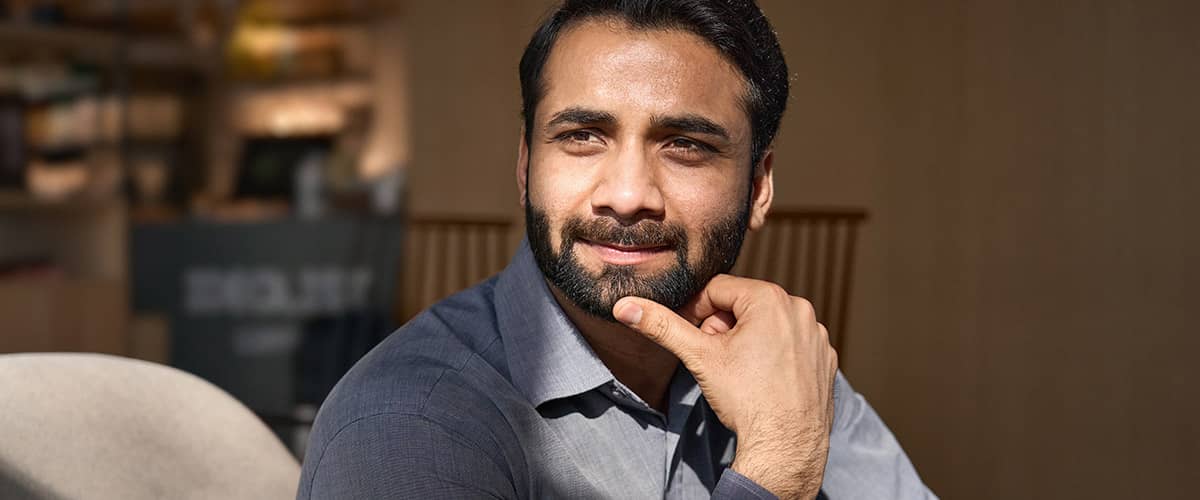
African-American Beard Transplants
African-American beard transplants require special attention due to the unique characteristics of African hair. The kinky texture of African hair is more prone to breakage and creates the illusion of density, possibly requiring fewer grafts. Additionally, the hair follicles can change direction under the skin, making it crucial for the surgeon to carefully place the grafts for a natural appearance.
Donor Hair Quality
The quality of donor hair plays a crucial role in the success of any facial hair transplant, regardless of ethnicity. For African-American patients, the curly hair texture can make it more challenging to harvest and transplant hair follicles. However, an experienced surgeon like Dr. Anthony Bared can successfully perform this procedure by carefully selecting and handling donor hairs to provide the best possible outcome.
Curl Pattern Considerations
For patients with curly hair, such as African Americans and some Caucasians, it is essential to consider the curl pattern when placing grafts during a facial hair transplant. For example, if the transplanted hair has a different curl pattern than the existing hair, it can create an unnatural appearance. This can be especially noticeable at the hairline, where the transition from transplanted to existing hair is most visible. Dr. Bared takes into account the natural curl pattern of the patient’s hair to ensure that the transplanted hair blends seamlessly with the existing facial hair, resulting in a natural and aesthetically pleasing appearance.
Hair Density and Growth Characteristics
Different ethnic hair types yield varying hair densities and growth characteristics, which can impact the results of a facial hair transplant. For example, follicular density in African Americans can be lower than other types of hair, even though it may not appear that way. Understanding hair density is important to the success of the hair transplant surgery, as it can affect the number of grafts that can (or should ) be harvested. Dr. Bared considers these factors when planning and performing ethnic facial hair transplants to create the most natural-looking results possible.
Patience Necessary for Results to Show
The full results of a facial hair transplant may take anywhere from 6 to 18 months to become apparent, with African-American hair being at the latter end. After the procedure, the hair follicles will go into “shock” before growth starts, and growth rate varies from person to person. It is essential for patients to have patience and understand that their facial hair will continue to improve and fill in over time. Dr. Bared will provide guidance and support throughout the entire process, ensuring that each patient is satisfied with their results. Before undergoing treatment, many patients enjoy looking at real before and after results from the surgeon’s photo gallery.
Careful Placement of Grafts for Natural Look
Consider any potential future hair restoration when planning your beard transplant. Dr. Bared carefully places each graft at the correct angle and direction to mimic the patient’s existing hair growth pattern. This meticulous attention to detail ensures that the transplanted hair blends seamlessly with the patient’s natural facial hair, resulting in a full and natural-looking beard.
Eyebrow Transplantation
Before & After Photos
Each patient is unique and individual results may vary*.
East Asian Beard Transplants
Every East Asian beard transplant also requires special considerations, as the contrast between hair color and skin color can affect the perceived density of the beard. The FUE approach is normally preferred for these patients because the FUT scar might be more visible with this hair/skin type. The FUE punch technique might necessitate a distinct method due to the grafts’ depth, and swift placement is essential for their survival. This requires a skilled and efficient surgical technique.
Determining Appropriate Hairline for Natural Look
For East Asian patients, determining the appropriate hairline for a facial hair transplant is crucial to achieving a natural look. Dr. Bared takes into account the patient’s facial structure and hair growth patterns to design a hairline that complements their features, maintains their cultural identity, and enhances their overall appearance.
Contrast Between Skin Color and Hair Color
Consider any potential future hair restoration when planning your beard transplant. Always consult a professional about the process and side effects.
This is especially true for East Asian patients, who often have a higher contrast between their skin and hair colors. Dr. Bared carefully considers this contrast when planning and performing beard transplants for East Asian patients to ensure the most natural-looking results.Specialized Adjustments to Facial Structure
Each ethnic group has unique facial structures that require specialized adjustments during a facial hair transplant. East Asian facial anatomy can differ significantly from that of other ethnic groups, with characteristics such as a flatter and wider face, a less prominent chin, and a smaller jawline. Dr. Bared will thoroughly assess the patient’s facial anatomy to determine the optimal placement and shape of the facial hair transplant.
Using Finer Follicles for Asian Hair
For East Asian patients, the use of finer hair follicles is essential to achieve a natural-looking beard transplant. Dr. Bared carefully selects the most appropriate follicles for each patient, considering factors such as hair thickness, texture, and color. This attention to detail ensures a seamless blend between the transplanted and existing facial hair.
Considering Possibility of Donor Scarring
When performing a beard transplant for East Asian patients, Dr. Bared takes into account the possibility of donor scarring, which is more extensive using the FUT technique. Instead, the FUE technique uses a punch tool that makes a tiny incision around the hair follicle, allowing each one to be individually extracted from the scalp. Because the incisions are very small, they heal quickly and leave only tiny, barely visible scars that can be easily hidden by the surrounding hair.
South Asian/Indian Beard Transplants
Understanding Ethnic Hair Follicle Characteristics
For South Asian and Indian patients, it is crucial to understand the unique characteristics of their hair follicles. The follicle’s shape dictates if the hair will be straight, curly, or wavy.
Dr. Bared considers follicle shape when planning and performing beard transplants for these patients, with many South Asians having curly and textured hair.
Matching Color of Indian/South Asian Facial Hair to Skin Tone
When performing a beard transplant for South Asian and Indian patients, Dr. Bared carefully considers the color of the patient’s facial hair in relation to their skin tone. For Indian/South Asian patients, this contrast is not dramatic, which lends to a higher perceived density of the results.
Considerations for Darker Skin and Coarser Hair Types
For South Asian and Indian patients with darker skin and coarser hair types, special considerations must be taken into account during a beard transplant. Dr. Bared selects the most suitable donor hairs and positions the grafts at the proper angle and direction to resemble the patient’s existing hair growth pattern. This meticulous attention to detail ensures a natural and aesthetically pleasing result.
Accurately Determining an Appropriate Hairline for Natural Results
In South Asian and Indian populations, the beard hairline is often lower and extends further along the jawline than in other ethnic groups. This is because South Asian individuals tend to have a stronger jawline and more prominent chin, which can accommodate a lower and fuller beard line.
For South Asian and Indian patients, determining the appropriate hairline for a beard transplant is crucial to achieving a natural look. Dr. Bared also takes into account the patient’s facial structure, natural hair growth pattern, and hair texture to create a hairline that complements their features and enhances their overall appearance.
Properly Placing Grafts in a Strategically Sparse Pattern
In general, South Asian/Indian hair tends to be thicker and coarser than other hair types, which means that the surgeon may need to use a sparser placement pattern to avoid creating a dense, unnatural-looking hairline.When performing a beard transplant for South Asian and Indian patients, Dr. Bared places the grafts strategically to ensure that the transplanted hair mimics the patient’s natural facial hair growth pattern, resulting in a more natural and aesthetically pleasing appearance.
Mimicking Existing Hair Growth Patterns for Natural Look
One important factor to consider is the existing hair growth pattern, which can vary widely between individuals. To create a natural-looking beard transplant, Dr. Bared carefully examines the patient’s existing hair growth patterns and replicates them as closely as possible using transplanted hair follicles. This requires a thorough understanding of the direction, angle, and spacing of the existing hair, as well as the ability to mimic these patterns using the transplanted hair.
Using Finer, More Delicate Follicles For Indian/South Asian Facial Hair
Fine hair isn’t normally an obstacle to getting a hair transplant, although the new beard may be thinner than with naturally thick hair. Dr. Bared carefully selects the most appropriate follicles for each patient, considering hair thickness, texture, color and more. This attention to detail ensures a seamless blend between the transplanted and existing facial hair.
General Tips For Your Ethnic Beard Transplant
Choose The Right Surgeon for your Bear Restoration!
Selecting an experienced surgeon with expertise in ethnic beard transplants is essential for achieving the best results. Dr. Anthony Bared is a beard transplant specialist with a deep understanding of the unique considerations for various ethnic hair types and facial structures. His extensive experience ensures that patients receive personalized care and natural-looking results.
Be Realistic about Beard Transplant
It’s important to have realistic expectations about the outcome of your beard transplant. While the procedure can significantly improve the appearance of your facial hair, it’s essential to understand that individual results may vary. This includes the procedure, the growth process and time, and how much hair will be taken from the donor sites. Discuss your goals and concerns with Dr. Bared to ensure that your expectations align with what can be achieved through the transplant process.
Prepare For The Beard Restoration Consultation

Before your consultation, gather relevant medical history, a list of medications you’re taking, and any specific goals you have for your beard transplant. This information will help Dr. Bared assess your suitability for the procedure and personalize a treatment plan to achieve your desired results.
Don’t Be Shy in your Facial Hair Transplant Consultation
During your consultation, don’t hesitate to ask questions and express any concerns you may have about the beard transplant process. Open communication with Dr. Bared is important to ensure that you understand the procedure, recovery, and expected results so that you can make an informed decision.
Think Ahead about a Beard Restoration
A facial hair transplant or beard transplant investment involves the transfer of hair from a donor site, usually the back of the head.
Discuss with Dr. Bared whether additional procedures may be necessary to maintain your desired appearance as you age and if the current transplant plan can accommodate future treatments.About Dr. Anthony Bared
Dr. Anthony Bared is a beard transplant specialist, one of only a few in the nation. He has pioneered facial hair restoration techniques and performed many beard transplants for men from all walks of life. The beards Dr. Bared creates for patients look incredibly natural and help men put their best foot forward.
As a beard transplant expert, Dr. Bared has an in-depth understanding of how ethnic beard transplants should be performed. His patients are extremely diverse and have different cultural and personal expectations for the procedure. Dr. Bared works hard to ensure that each patient is thrilled with their beard transplant results.
Ethnic Facial Hair Restoration FAQs
The number of hair grafts required for a successful beard transplant varies depending on the patient’s desired density, hair type, and existing facial hair. Dr. Bared will assess your individual needs during your consultation and provide an estimate of the number of grafts necessary to achieve your goals.
Keloid scarring is rare, but it is a concern for some patients – particularly those with darker skin tones. Dr. Bared takes precautions to minimize the risk of scarring, including using the FUE technique, which results in minimal scarring and faster recovery. Be sure to discuss any previous issues with scarring during your consultation with Dr. Bared.
FUE is an effective and appropriate technique with a high success rate for each African-American beard transplant and African-American hair transplant. The FUE procedure involves harvesting individual follicles, resulting in minimal scarring and faster recovery compared to the FUT technique. Dr. Bared’s expertise in ethnic beard transplants ensures that African-American patients receive the best possible care and results.
Not necessarily. The length of an ethnic facial hair transplant is determined by the number of grafts required for the best results. This number varies, depending on the characteristics of the patient’s hair and follicles. Dr. Bared will provide an estimate of the procedure time during your consultation, between two and eight hours.
The timeline for visible results after a beard transplant varies depending on the patient’s hair type and growth rate. Generally, patients can expect to see initial growth within three to four months, with full results taking anywhere from six to 18 months. Patience is essential, as the transplanted hair will grow at a natural pace.
The procedure itself should not cost more due to your race or ethnicity. The complexity of the surgery and the number of grafts should determine the cost. Beard transplants can get quite expensive, but it’s very important not to cut corners to save a little money. It’s better to pay more to work with an experienced and skilled surgeon than it is to take a gamble on someone who charges less. To find out more about hair transplant cost miami, you can schedule a consultation.
Ethnicity can significantly influence the results of a beard transplant due to variations in hair texture, growth patterns, and follicle structure. For instance, African ethnicities typically have curly hair, requiring careful placement to ensure a natural look, while Asian hair may require more density due to finer hair strands.
Yes, beard transplants can be performed on all ethnic hair types. However, the technique may be adjusted to accommodate the unique characteristics of each hair type, such as the angle of implantation and the selection of donor hairs to match the recipient area’s natural growth.
Ethnic patients should consider the natural direction of their hair growth, the desired density, and the potential for scarring. Consulting with a surgeon who has experience in ethnic hair transplants is crucial to address these considerations and achieve the best outcome.
Post-transplant care for ethnic hair includes gentle washing, avoiding harsh chemicals, and protecting the skin from sun exposure. Additionally, patients may be advised on specific products or techniques to maintain the health and appearance of their transplanted beard.
Schedule Your Consultation
If you’d like to work with one of the world’s top ethnic beard transplant surgeons, then you might want to consider an in-person or virtual consultation with Dr. Anthony Bared. Dr. Bared can help you figure out if you’re a good candidate for the procedure and create the perfect treatment plan to suit your facial hair goals. To schedule an ethnic facial hair transplantation consultation in Miami, call 305-666-1774 today.
Want to know more about Beard Transplant?
- Comparing Hair Transplant Results: Dr. Anthony Bared vs. Other Competitors
- Beard Transplant vs. Medical Beard Growth Solutions: What’s Best for You?
- What to Expect Before, During, & After a Beard Transplant
- Surgical Techniques for Beard Implants
- Side Effects of Beard Transplantation
- Beard transplant risks you should be aware of before surgery
- Recovery Process for Facial Hair Transplants
- Beard Growth Medications
- FTM Transgender Beard Transplantation
- Ethnic Patients Facial Hair Restoration
